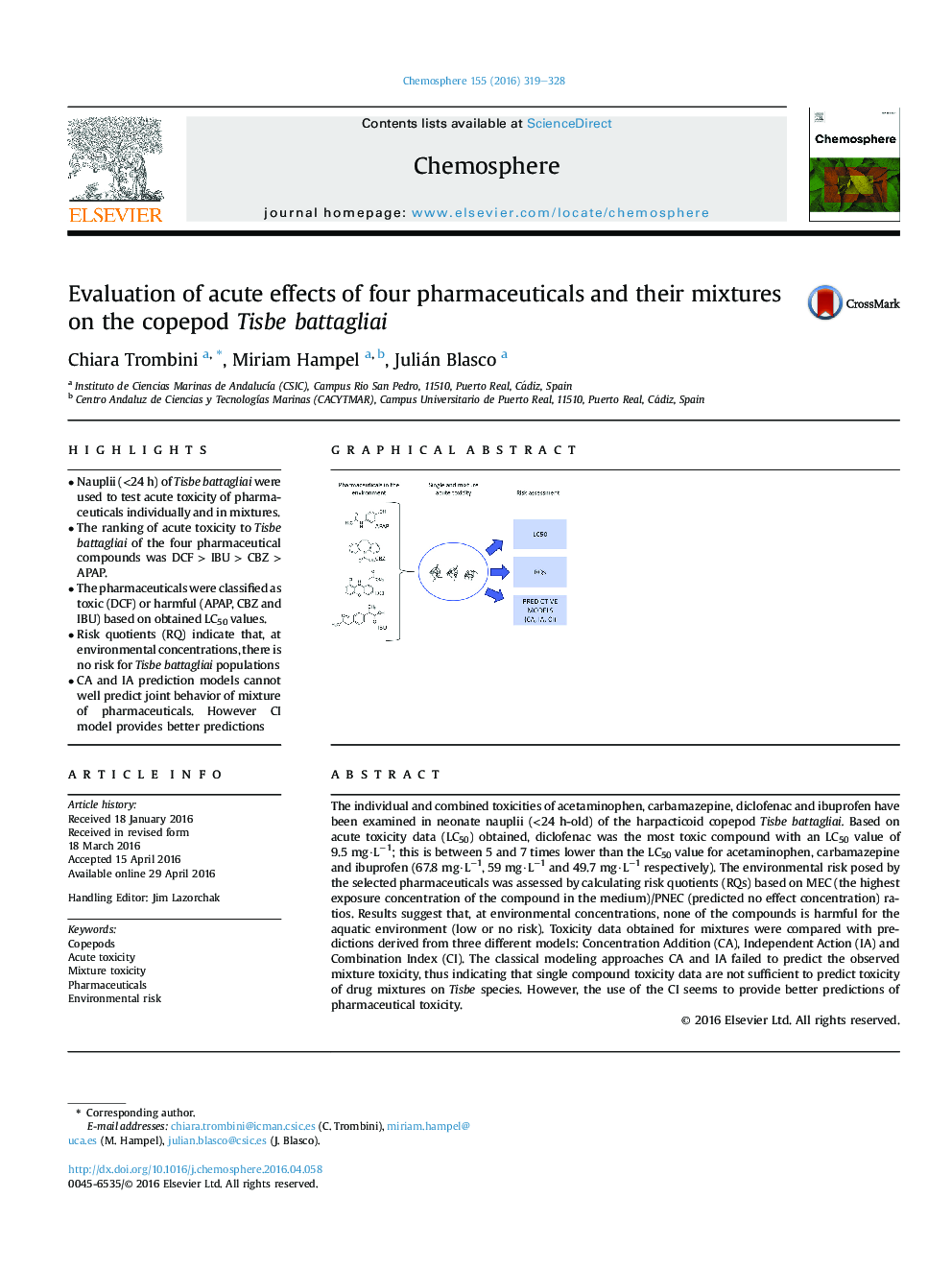| Article ID | Journal | Published Year | Pages | File Type |
|---|---|---|---|---|
| 4407523 | Chemosphere | 2016 | 10 Pages |
•Nauplii (<24 h) of Tisbe battagliai were used to test acute toxicity of pharmaceuticals individually and in mixtures.•The ranking of acute toxicity to Tisbe battagliai of the four pharmaceutical compounds was DCF > IBU > CBZ > APAP.•The pharmaceuticals were classified as toxic (DCF) or harmful (APAP, CBZ and IBU) based on obtained LC50 values.•Risk quotients (RQ) indicate that, at environmental concentrations, there is no risk for Tisbe battagliai populations•CA and IA prediction models cannot well predict joint behavior of mixture of pharmaceuticals. However CI model provides better predictions
The individual and combined toxicities of acetaminophen, carbamazepine, diclofenac and ibuprofen have been examined in neonate nauplii (<24 h-old) of the harpacticoid copepod Tisbe battagliai. Based on acute toxicity data (LC50) obtained, diclofenac was the most toxic compound with an LC50 value of 9.5 mg·L−1; this is between 5 and 7 times lower than the LC50 value for acetaminophen, carbamazepine and ibuprofen (67.8 mg·L−1, 59 mg·L−1 and 49.7 mg·L−1 respectively). The environmental risk posed by the selected pharmaceuticals was assessed by calculating risk quotients (RQs) based on MEC (the highest exposure concentration of the compound in the medium)/PNEC (predicted no effect concentration) ratios. Results suggest that, at environmental concentrations, none of the compounds is harmful for the aquatic environment (low or no risk). Toxicity data obtained for mixtures were compared with predictions derived from three different models: Concentration Addition (CA), Independent Action (IA) and Combination Index (CI). The classical modeling approaches CA and IA failed to predict the observed mixture toxicity, thus indicating that single compound toxicity data are not sufficient to predict toxicity of drug mixtures on Tisbe species. However, the use of the CI seems to provide better predictions of pharmaceutical toxicity.
Graphical abstractFigure optionsDownload full-size imageDownload as PowerPoint slide
